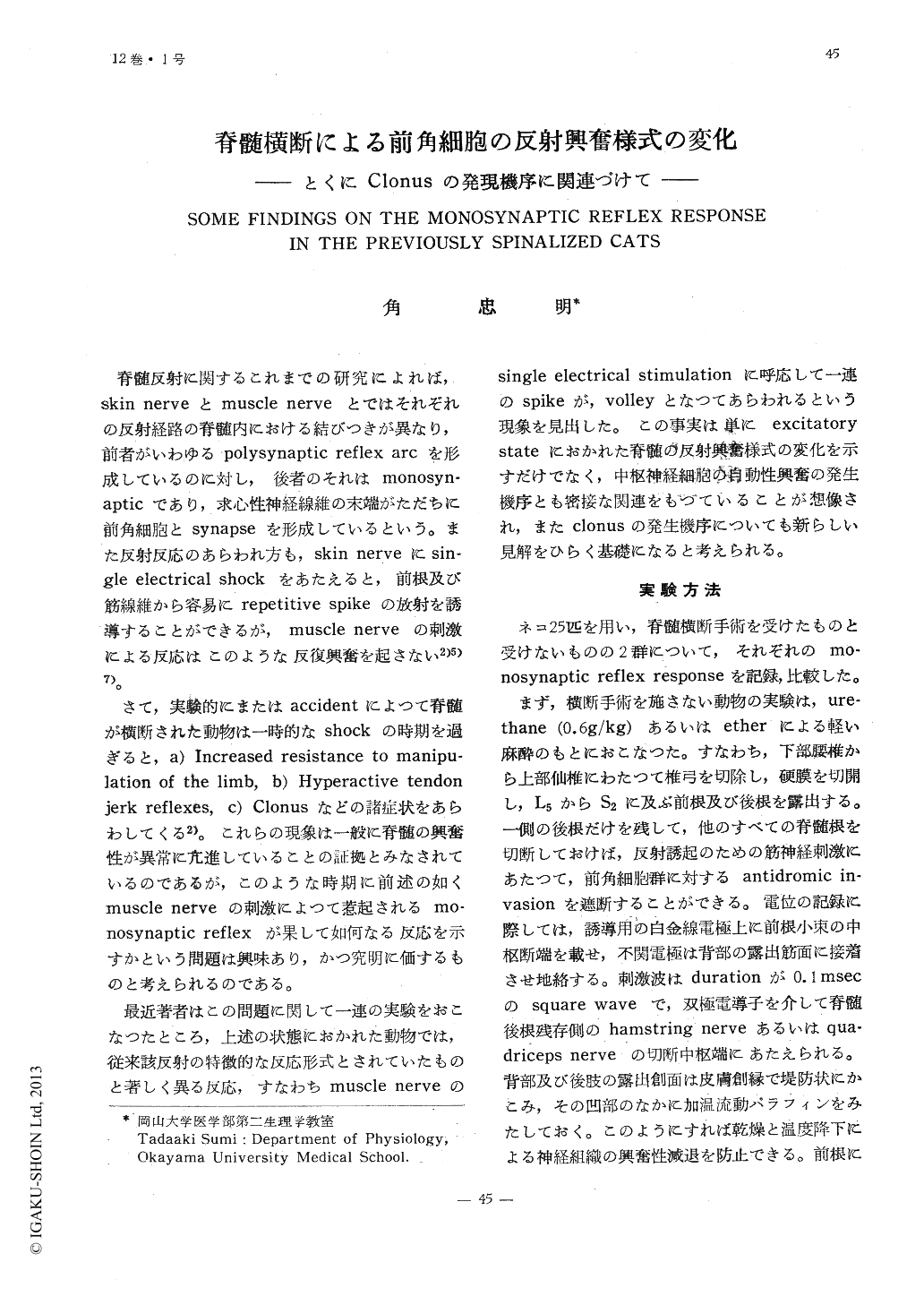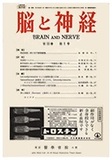Japanese
English
- 有料閲覧
- Abstract 文献概要
- 1ページ目 Look Inside
脊髄反射に関するこれまでの研究によれば,skin nerveとmuscle nerveとではそれぞれの反射経路の脊髄内における結びつきが異なり,前者がいわゆるpolysynaptic reflex arcを形成しているのに対し,後者のそれはmonosyn-apticであり,求心性神経線維の末端がただちに前角細胞とsynapseを形成しているという。また反射反応のあらわれ方も,skin nerveにsin-gle electrical shockをあたえると,前根及び筋線維から容易にrepetitive spikeの放射を誘導することができるが,muscle nerveの刺激による反応はこのような反復興奮を起さない2)5)7)。
さて,実験的にまたはaccidentによつて脊髄が横断された動物は一時的なshockの時期を過ぎると,a) Increased resistance to manipu-lation of the limb, b) Hyperactive tendon jerk reflexes, c) Clonusなどの諸症状をあらわしてくる2)。
1. The ventral root reflex potential being monosynaptically provoked by a single shock stimulation of a nerve branch comming from the quadriceps muscle or that from the gas-trocnemic muscle in the cat whose spinal cord has been transected aseptically at the level of Th10 about two weeks before is irr-egular in its shape and is prolonged in its duration.
2. The reflex response led off from a uni-tary nerve fiber being comprised in the ven-tral root of spinal cord consists of a volley of repetitive spikes.
3. Temporal pattern of the unitary repet-itive spike discharge is differed from fiber to fiber in each respective latency, mean discharge frequency, discharge duration, threshold and susceptibility to various stim-ulation intensities and is classified to two types, i.e. the rapidly responding type and the slowly responding one.
4. The site responsible for causing the change of the reflex potential may be the synaptic region or the motoneuron itself in the spinal cord, since the shape of nerve action potential recorded at the entrance of a dorsal root into the cord is just as the same as that recorded in the intact animal.

Copyright © 1960, Igaku-Shoin Ltd. All rights reserved.


